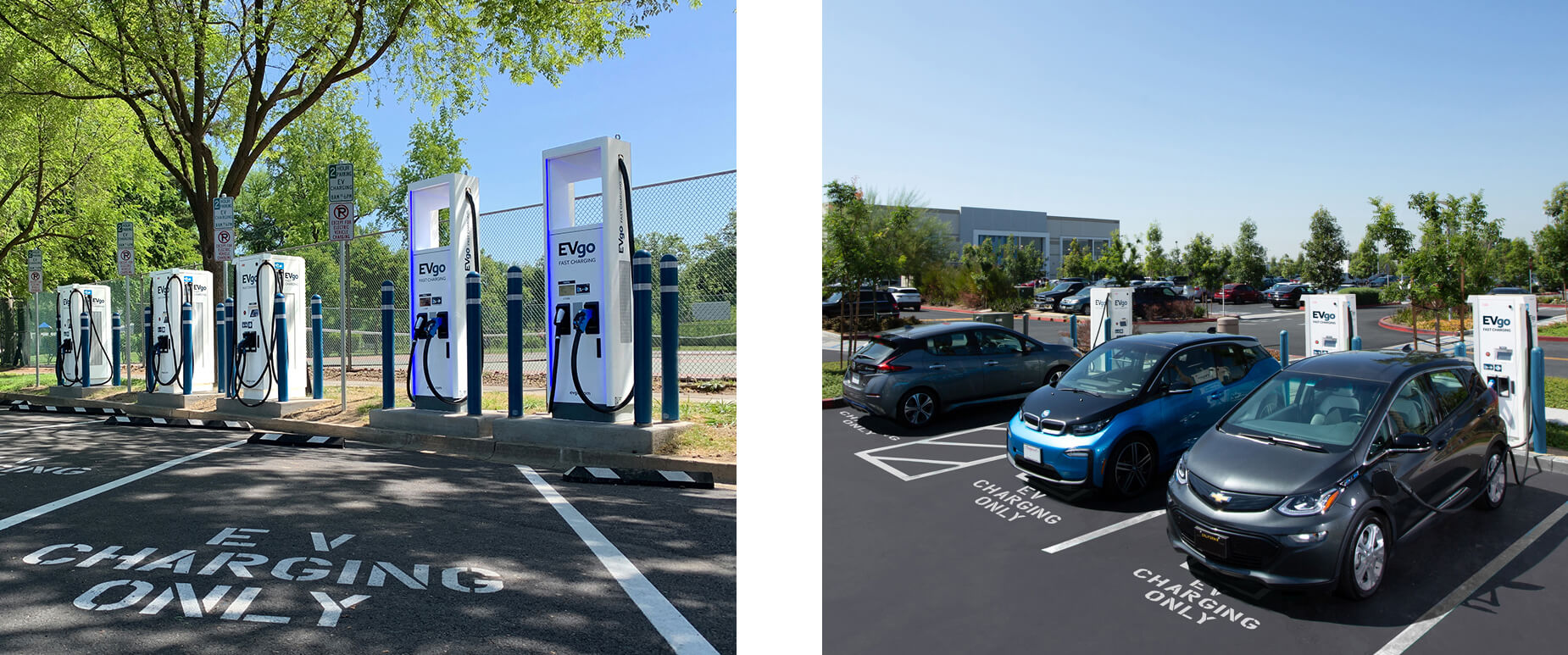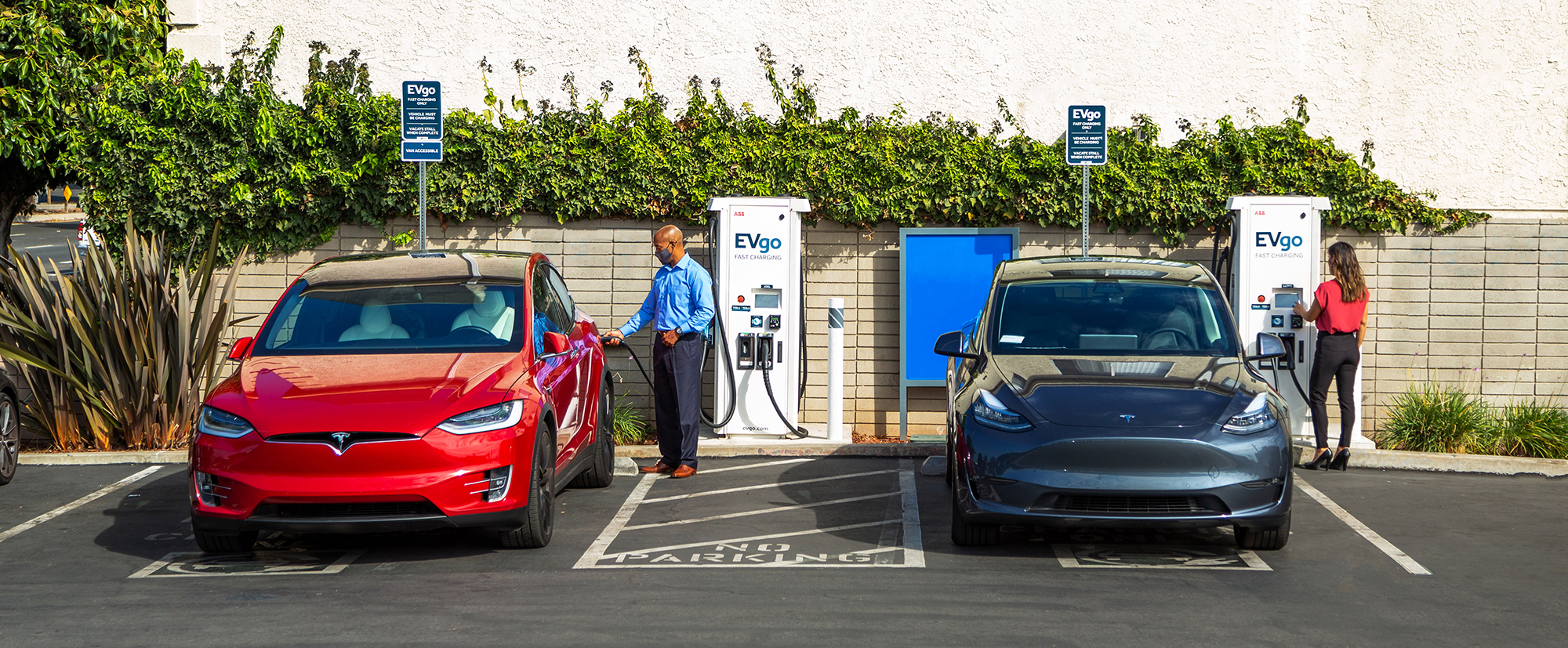
Federal Transportation Electrification: 6 Key Principles for Speed, Scale, Jobs, and Equity
Transportation electrification is essential for reducing greenhouse gas emissions, creating jobs, and stimulating economic growth. Based on over a decade of experience, here are six crucial elements for successful federal investment in EV infrastructure:
- Complementary Policies for EV Sales and Charging Infrastructure
Federal policies must simultaneously support both EV sales and infrastructure development. This includes:
- Extending and reforming the 30D vehicle tax credit
- Expanding the 30C alternative refueling property tax credit
- Pairing infrastructure investments with consumer incentives
- Creating sustainable jobs across manufacturing, construction, and operations

EV charging stations with customer
- State-Led Implementation
Leverage existing state energy offices to administer funds and manage programs because:
- They have proven success with clean energy programs
- Experience managing VW settlement funds
- Established competitive program expertise
- Ensuring Equitable Access
Enable "Electric For All" through:
- Investment in diverse charging solutions (DCFC and Level 2)
- Additional incentives for low-income communities
- Public charging access in multi-unit dwelling areas
- Strategic deployment using EPA's EJScreen tool
- Rural community infrastructure support

Two people charging electric vehicles
- Private Sector Investment
Maximize federal impact by:
- Creating public/private partnerships
- Implementing cost-share requirements
- Reducing early-market investment risks
- Setting fleet electrification standards
- Outcome-Based Policy Design
Focus on measurable results:
- Drivers served
- Electrified vehicle miles traveled
- Job creation (1 FTE per DC fast charger)
- Geographic expansion incentives
- Fleet electrification targets

EV charging station with solar panels
- Streamlined Implementation
Accelerate deployment through:
- Establishing an EV Deployment Task Force
- Improving permitting processes
- Facilitating utility interconnection
- Spreading best practices
- Reducing soft costs
For optimal results, these elements must work together, supported by coordination between government agencies, private sector partners, and local stakeholders.
